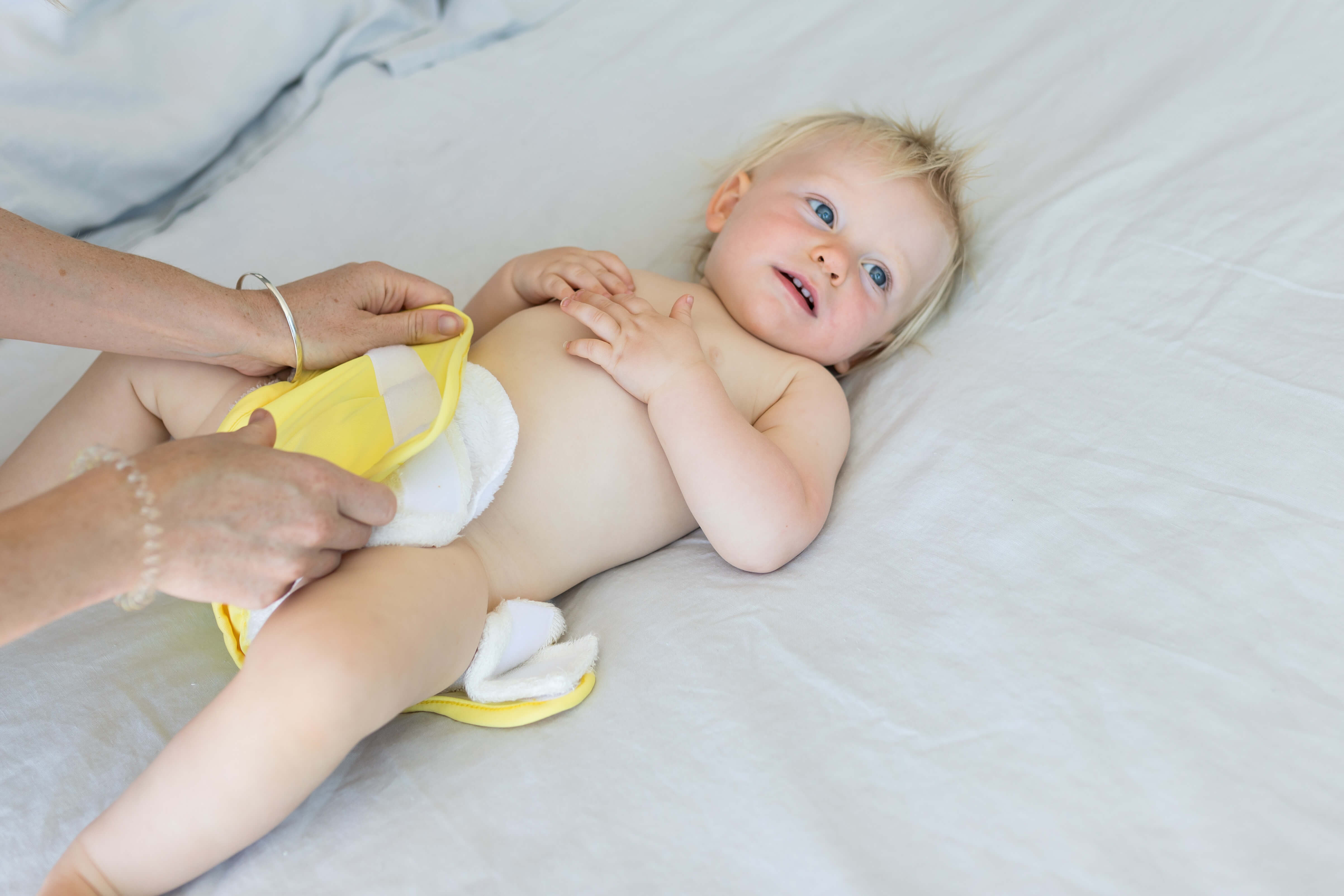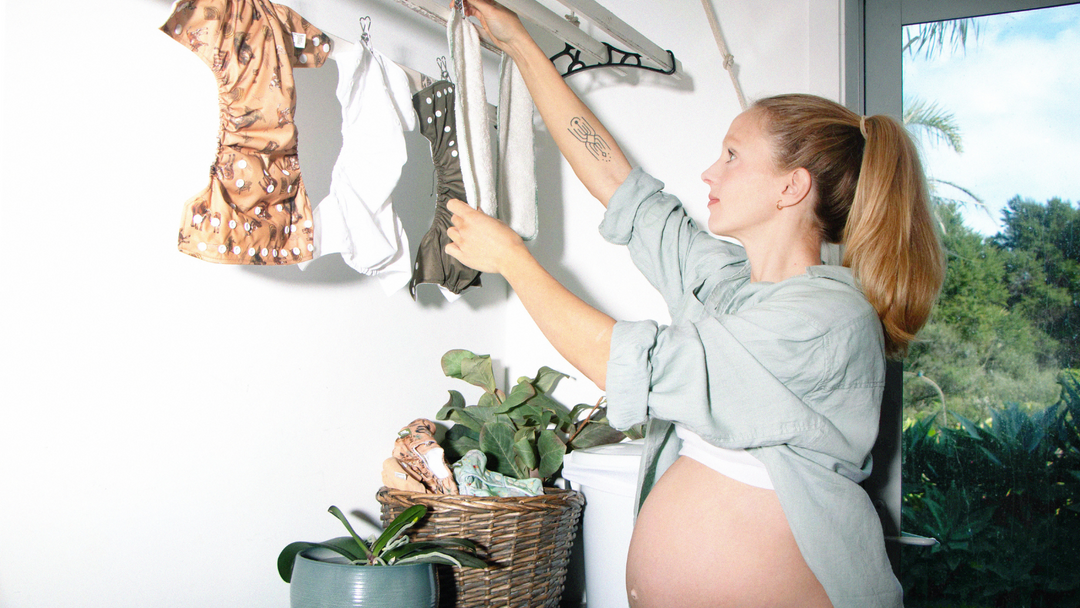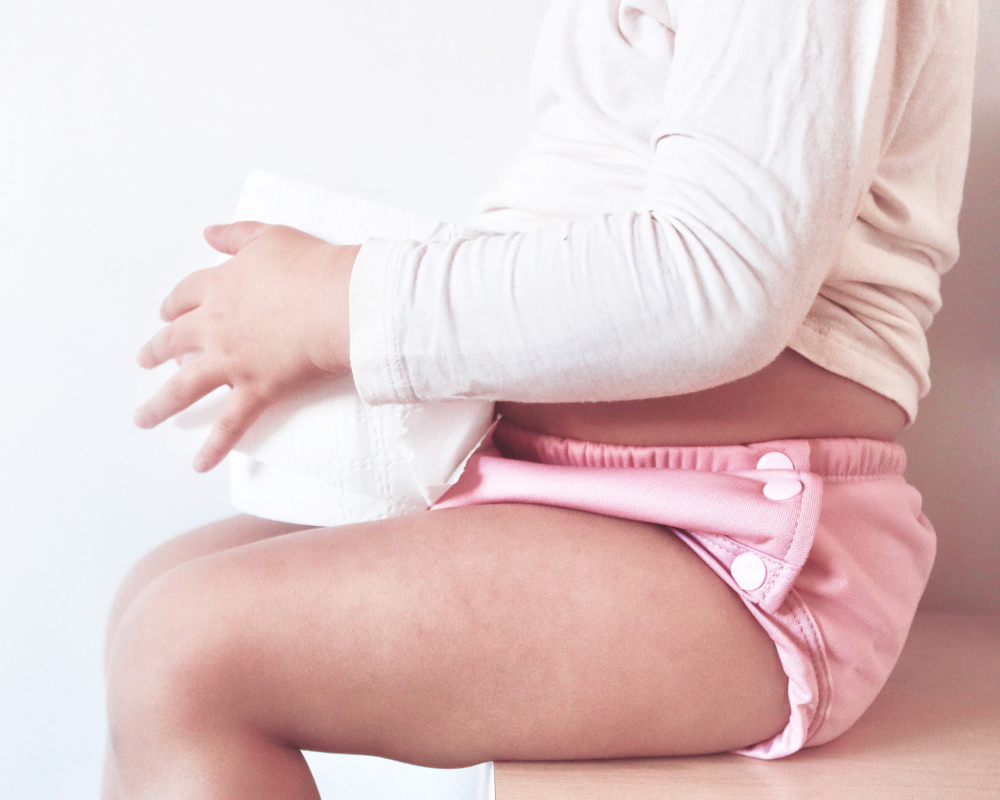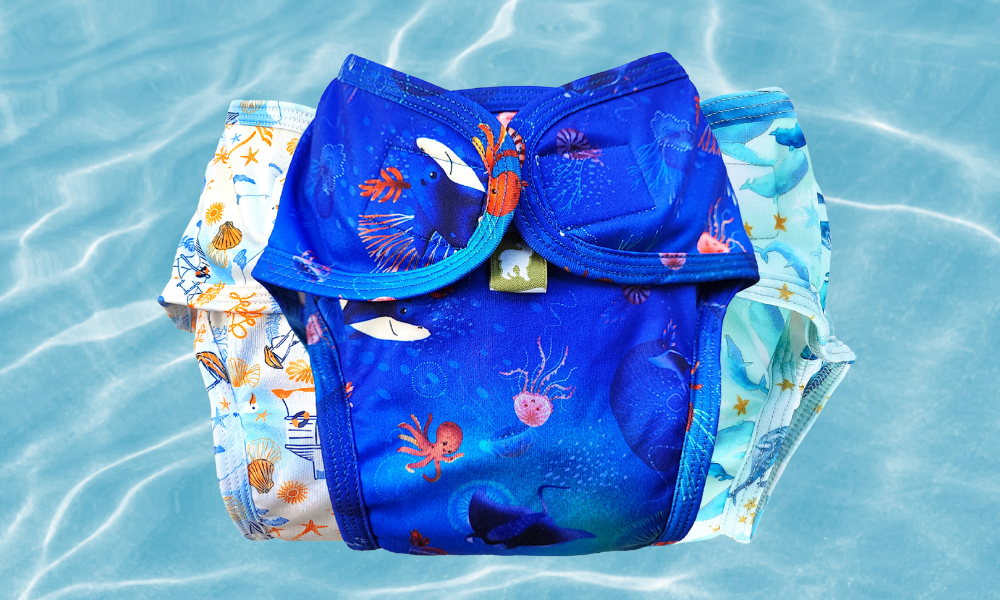
Reusable nappies offer many benefits. They are better for the environment, save you money and they are more comfortable for babies to wear. However, if you are using reusable nappies for the first time, you may be feeling a bit unsure about how to use them effectively. To help you on your cloth nappy journey, we have put together this guide to reveal everything that you need to know.
How reusable nappies work
It is not difficult to use reusable nappies, but they are slightly different to disposables. In straightforward terms, you'll use the nappy on the baby, wash it and then reuse it, again and again. Wear, wash and repeat.
Reusable nappies have different components to disposable nappies, which can be confusing when you first see a cloth nappy. Let's break it down; First, you have the nappy itself, which provides absorbency. Some cloth nappies (such as all-in-ones, hybrids and pocket nappies) have a waterproof layer built into the nappy itself, but other types (like prefolds and fitted nappies) need a waterproof cover. Pocket nappies are the most similar to disposable nappies in terms of aesthetics and fitting.
Each nappy typically has a disposable or washable liner on the top layer of the nappy, next to babies skin. The liner has two jobs; keep babies skin dry and catch any solids (the poo!). Disposable liners mean you can quickly plop the poo down the toilet and then dispose of the mucky liner in a bin. A reusable liner does the same job, but it's fluffy composition means you can wash it and reuse it again and again. During the night or on long car journeys, you may want to add a booster pad to 'boost' the nappy's absorbency. Boosters are sometimes also referred to as an 'insert'. Cloth nappies are customisable to absorbency needs so can be used for daytime and nighttime; add more boosters for a nappy you'll leave on longer.
What do you need to get started with reusable nappies?

You will need some reusable nappies, of course, and the number you need depends on your baby's age. Starting with 20 is a good number as this is enough to ensure you do not run out in between washes if you do a wash every second day.
You will also need some good storage options for the dirty nappies. Either a nappy bucket or a hanging nappy bag will do the job. You need to make sure you have something big enough to store your wet nappies until wash day comes about. If you are out and about, you can use a waterproof wet bag until you get home.
We also suggest starting with some extra boosters too. The most common reason for a nappy to leak is it needs extra absorption, so starting with boosters on hand will give you a good head start.
You may also want to consider purchasing some disposable liners. These are not necessary, but they can be helpful, especially once baby reaches weaning age. They lay inside of the nappy to catch solids, and you can dispose of them in your typical bin. Do not flush disposable liners down the toilet!
Finally, if you are starting to use reusable nappies, you may as well use washable wipes! These are, just as they sound, reusable wipes that you clean and reuse, again and again - saving you money and creating much less waste each nappy change.
How regularly should reusable nappies be changed?
This depends on the baby’s age and how heavy a wetter they are. Typically, though, you should change the nappy between two and four hours every day, and of course, immediately after your child has had a poo. During the night, if you do add extra absorbency, your baby will be able to safely wear the same nappy for around 8 hours as they do not usually poop in their sleep - but it is important to change them first thing in the morning and make sure to cleanse very well at this stage. When changing, always make sure you clean the whole nappy area, not just the genital area - best practice is to wipe down the waist and tops of the legs as well.
Changing a nappy frequently can reduce problems such as;
- • Nappy rash
- • Skin chafing
- • Leaks and ‘poo explosions’
Nappy changing age guide:
- • Under 1 month; change every 2 hours during the day and at every night feed.
- • Under 6 months; Every 2.5-3 hours during the day, at night as needed
- • 6-12 months; Every 3 hours during the day, at night only if needed
- • 1 year+; Every 3-4 hours, approximately ⅘ changes in 24 hours
You don't need to use nappy rash cream every change because this can inhibit the skin's ability to breathe. Keep it for when the baby's bottom looks a little red, and then apply a fine layer, well rubbed in. We recommend using paper liners when applying creams to help to prevent the fabric of the nappy from becoming too 'gunked up' as there is always a risk it may affect the absorbency. Should your baby suffer from nappy rash, changing the nappy more regularly should help with this, as well as nappy free time.
How should you care for reusable nappies?
It is easy to care for reusable nappies. When you remove the nappy from your little one, simply flush any of the poo down the toilet, and then put the washable liner and the nappy and any extra components into a nappy bucket or hanging nappy pail. You don’t need to change the wrap with every nappy change; only if it is at the end of the day or it has been soiled.
Before you place the nappies into the storage bag or bucket, make sure that all of the velcro fastenings are done up so that they do not catch, otherwise, your nappies are going to end up in a big ball. Some fastenings will have laundry tabs and you can fold them back on themselves. If they don’t, you can simply do the nappy or wrap up on the widest setting, and then turn it inside out. This will also stop the velcro from becoming damaged, as well as making sure the hook velcro does not cause any damage to other items in the wash.
Some tips on using reusable nappies

Aside from the advice that we have provided you with so far, we have some more tips to for you when it comes to using reusable nappies;
- • Babies will not typically poo while they are sleeping, only once they wake up. So if your little one goes to bed with a full bowel, they will usually fill their nappy shortly once they have woken up. This is why it often makes sense to use a bit of extra protection and allow your child to wear the same nappy all through the night.
- • You should have a minimum of three night time nappies and wraps, enabling there to be one in use, one in the wash, and another as a backup
- • Fleecy liners are great for night time as its adds a stay dry layer of protection for babies skin. Our Complete Cover Fleecy Liners add maximum coverage. Liners also lower the change of staining the nappies.
- • It can be a good idea to fold any additional boosters or inbuilt boosters so that they pad exactly where your child wees, i.e. in the middle for girls and at the front for boys.
- • When you put a wrap over a fitted nappy, feel around the legs and waist to make sure the nappy is completely covered by the wrap. If you don’t, the wet could end up wicking out onto the clothing.
- • Do you live in a hard water area? If you do, the nappies will end up becoming hard over time. It helps if you keep your washing machine clean by running an 80-degree hot wash or a maintenance wash without any laundry every few months. Also, you can do an occasional extra wash cycle without detergent to get rid of any build-up.
- • Wraps and pocket nappies should never be left to soak, as this can impact their waterproofing ability.
- • Heavily soiled nappies (ones with lots of poo) need to be rinsed through, and then wring them out and keep in the nappy bucket damp until you are ready to wash them, as this helps to stop the stains from setting.
Final words on using reusable nappies
So there you have it: everything that you need to know about using reusable nappies instead of disposable nappies. We hope that the information that we have provided above will give you a better understanding of how to use these nappies effectively if you have been feeling unsure. If you have any questions, get in touch. We are here to help care@littlelamn.com







